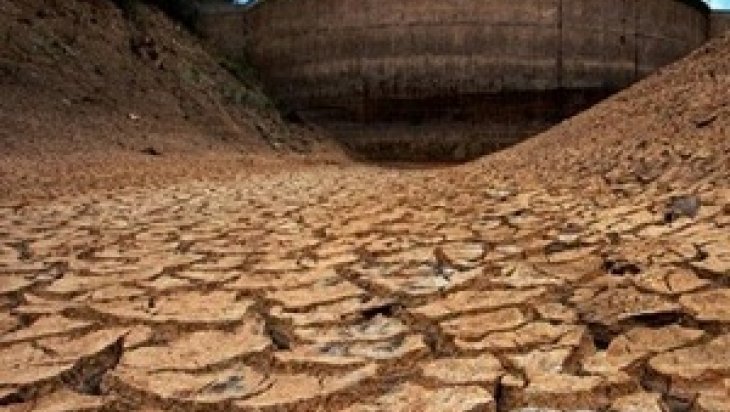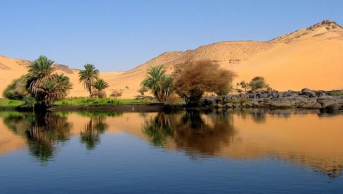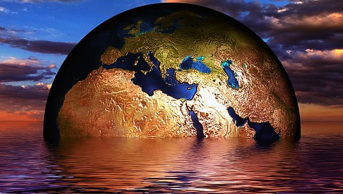One Step Forward: The Concept of Water Security in the Middle East

The concept of water security is on the rise. There are both narrow(er) and wide(r) definitions. A -too- narrow definition deals only with a single dimension, generally the sustainability of access to potable water. While this “drinking water” dimension of water security is a sine quo non criterion for the overall water problem in the world, it falls short of capturing all other elements that may constitute a complete picture of water security.
On the other hand, the United Nations defines water security very broadly, “as the capacity of a population to safeguard sustainable access to adequate quantities of acceptable quality water for sustaining livelihoods, human well-being, and socio-economic development, for ensuring protection against water-borne pollution and water-related disasters, and for preserving ecosystems in a climate of peace and political stability.”This second type of definition has now been accepted more as the standard way of understanding water security. But it is not flawless.
As such it is a very flexible concept, even involving a degree of vagueness. Some details can make the definition a bit clearer. First, in this definition, four dimensions come to forefront: 1- drinking water and human well-being 2- economic activities and development 3- water related hazards and climate change and 4-ecosystems’ wellbeing. Secondly, according to UN’s definition of water security framework, four pillars should be in place in order to achieve water security. These are listed as “good governance”, “transboundary cooperation”, “peace and political stability”, and “financing”. These are very broad terms as well. So, still, the concept of water security remains to be buzzword which can be filled with so many components.
In order to overcome this ambiguity, to make water security more “measurable” and thus “comparable”, a number of studies proposed water security indices, each based on a set of indicator. Making water security quantified, as Lautze and Manthrithilake argue, may have three benefits: “ it can encourage clarity and common understanding of a concept around which there currently exists substantial ambiguity”, “ it can help to foster discussion and debate on scales and thresholds for evaluating the presence, absence or degree of water security”, and “ it can help to assess the extent to which the concept is really being achieved on the ground in different locations.”
It should be noted here that water security is a concept with wider scope than the very popular concept of water scarcity. Therefore, water scarcity indices, like the one proposed by Falkenmark and colleagues’, do not suffice to explain more complex phenomenon of water in(security). A water-scarce country in Falkenmark et al.’s index can well be a water-secure country depending on its ability to manage with that scarcity. The opposite may also be true: a water-insecure country may have abundant water resources. In this case, water resources are not used and protected in such a way that the aforementioned definition Water security is more related to “capacity”, whereas water scarcity is more related with “natural endowment”.
With an aim of quantifying water security, several indices were developed. Maplecroft’s water security index is one of earlier examples. Maplecroft’s research was based on four basic themes: “access to improved drinking water and sanitation; the availability of renewable water and the reliance on external supplies; the relationship between available water and supply demands; and the water dependency of each country's economy.” Lautzeand Manthrithilake’swater security index, which seems more comprehensive than Maplecroft’s,is based on Grey and Sadoff’s definition of water security which centers around “the availability of an acceptable quantity and quality of water for health, livelihoods, ecosystems and production, coupled with an acceptable level of water-related risks to people, environments and economies.”. Hence, they would be able to assess water security in five dimensions: basic needs, agricultural production, the environment, risk management, and independence. Let us now look at the calculation more closely.
Water security for basic needs is measured by the proportion of populations with “sustainable access (within 1 km) to an improved water source (household connections, public standpipes, boreholes, protected dug wells, protected springs, and rainwater collection)”. For the second dimension, i.e. water security for agricultural production, they used two indicators: water availability per capita and water withdrawal per capita. In determining water security for the environment, the concept of environmental water requirements (EWRs) was critical. The proportion of water not withdrawn in excess of the EWR is calculated through first subtracting the amount of water withdrawn and the EWR from a country’s renewable water resources and then by dividing the remaining amount by country’s renewable water resources. With regard to water security in terms of risk management, Lautze and Manthrithilake calculated storage capacities in a country’s large reservoirs, and used inter-annual precipitation variability. For the last component, namely water security for independence, they used the proportion of a country’s water resources generated internally.
Water security is an evolving concept, which appears to be more illuminating than the water scarcity, particularly in the context of Middle East. It is very important to construct it with less uncertainty. Creating indices help us at this matter, so that decision makers would have meaningful guides at their hands in front of complex phenomena such as water management. Lautze and Manthrithilake’s research on water security can be replicated in the Middle East for assessing the water security levels of countries of the region, and explain us more why some countries are less water secure despite their relatively abundant water resources.






